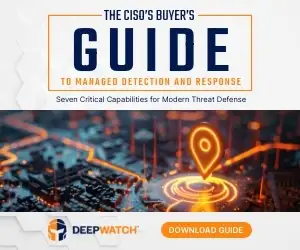
Vulnerability threat intelligence (VTI) is the collection, analysis, prioritization, and dissemination of information about software vulnerabilities that threat actors exploit. It identifies vulnerabilities and contextualizes them within active threat landscapes, adversary TTPs (Tactics, Techniques, and Procedures), exploit availability, and organizational exposure. For cybersecurity operations professionals—particularly those defending large, complex enterprises—VTI enables proactive risk reduction, informed patch management, and strategic threat mitigation before adversaries can operationalize vulnerabilities.
In today’s sophisticated threat environment, where exploitation windows are shrinking and the volume of vulnerabilities is overwhelming, vulnerability threat intelligence is indispensable for achieving resilience, reducing mean time to detect (MTTD) and respond (MTTR), and aligning cybersecurity investment with real-world risks.
Understanding Vulnerability Threat Intelligence
Vulnerability threat intelligence is essential for organizations to pinpoint, prioritize, and address exploitable weaknesses based on actual threat activities.
VTI systematically collects, enriches, and analyzes vulnerability data contextualized by threat actor behaviors, exploits, and organizational exposure. Unlike traditional management, which merely catalogs and patches known issues, VTI emphasizes actionable intelligence by linking vulnerabilities to adversary tactics, techniques, procedures (TTPs), weaponization trends, and live exploits.
Effective VTI includes sources like CVE/NVD databases, vendor advisories, and zero-day disclosures, enhanced by secondary intelligence such as exploit kit availability, underground discussions, and threat telemetry. It also considers internal factors, like asset criticality and network exposure, to prioritize vulnerabilities most at risk. (See Components and Sources of Vulnerability Threat Intelligence section for additional details.)
VTI should integrate with security operations, including SIEM correlation rules and patch management, to provide value. This integration allows for quicker detection of exploit attempts, informed threat hunting, and proactive risk mitigation, lowering mean time to detect (MTTD) and mean time to respond (MTTR).
Vulnerability threat intelligence transforms static vulnerability data into dynamic, threat-informed action, allowing enterprises to stay ahead of adversaries and protect critical systems against active exploitation.
Why Vulnerability Threat Intelligence Matters to Cybersecurity Operations
Vulnerability threat intelligence directly impacts the ability of security teams to defend enterprise networks by focusing efforts where they are needed most—on vulnerabilities that present immediate, credible threats.
- Prioritized Risk Reduction: Enterprises often face thousands of open vulnerabilities across their digital assets; VTI enables them to focus on the critical subset actively targeted by adversaries. Instead of patching everything indiscriminately, SOCs and vulnerability management teams can prioritize based on exploitability, attacker behavior, and criticality to business operations.
- Proactive Defense: Instead of reacting after an exploit occurs, organizations use VTI to patch or mitigate vulnerabilities proactively, sometimes before public disclosure of active exploitation. For instance, vulnerability intelligence feeds alert SOCs about zero-days leveraged by threat actors like APT28 or ransomware groups like LockBit.
- Attack Surface Management: VTI helps organizations understand which portions of their attack surface (applications, APIs, third-party services) are most exposed and how adversaries will likely target them, enabling preemptive hardening or network segmentation.
- Threat Actor Attribution: By tying vulnerabilities to specific TTPs and threat actors, VTI empowers defenders to anticipate and recognize attack patterns, improving incident response playbooks and threat hunting initiatives.
- Operational Efficiency: Security operations teams are often resource-constrained; VTI streamlines alert triage, reduces noise, and supports more effective personnel use by focusing resources on real threats rather than theoretical vulnerabilities.
Components and Sources of Vulnerability Threat Intelligence
Understanding where vulnerability threat intelligence originates and how it is constructed is crucial for cybersecurity leaders aiming to select or build the right VTI capabilities.
- Primary Sources: These include CVE/NVD databases, vendor security advisories (e.g., Microsoft Patch Tuesday bulletins), threat intelligence platforms, open-source repositories, dark web monitoring, and malware reverse engineering outputs. Organizations often correlate data from multiple sources to build a holistic picture.
- Indicators of Weaponization: These include proof-of-concept (PoC) exploit availability, malware samples exploiting a specific CVE, mentions on cybercriminal marketplaces, and active scanning or exploitation attempts observed via honeypots or threat telemetry.
- Threat Actor and Campaign Correlation: Linking vulnerabilities to attacker groups (e.g., FIN7 exploiting Citrix ADC flaws) helps organizations assess their heightened risk based on their industry sector or geopolitical exposure.
- Internal Data Augmentation: Enterprise telemetry, such as logs, EDR alerts, and network flow data, can enrich VTI by showing which vulnerable assets are actively targeted or probed within the organization’s environment.
Best Practices for Integrating Vulnerability Threat Intelligence into Security Operations
Mere possession of vulnerability threat intelligence is insufficient; it must be operationalized effectively across security and IT teams to deliver maximum value.
- Centralized VTI Platforms: Organizations should ingest VTI feeds into SIEMs, SOAR platforms, and vulnerability management systems to automate the enrichment and prioritization of vulnerabilities in real time.
- Business Contextualization: Vulnerability criticality should be adjusted based not only on CVSS score but also on the asset’s business function, regulatory impact, and exploitability status. For instance, a low-severity vulnerability on a payment processing system exposed to the internet may warrant urgent remediation.
- Threat-Informed Patch Management: Integrate VTI into patch management cycles to drive threat-based SLAs (service-level agreements) for vulnerability remediation. Vulnerabilities tied to active exploitation or ransomware campaigns should have shorter patch deadlines.
- Continuous Threat Monitoring: Cybersecurity teams must monitor for changes in threat landscape indicators; a previously theoretical vulnerability may rapidly become critical if a new exploit is developed or mass exploitation begins.
- Cross-Team Collaboration: VTI should be shared between SOC, CTI, incident response, and vulnerability management teams through automated workflows and regular threat briefings to ensure alignment and rapid action.
Emerging Trends in Vulnerability Threat Intelligence
As adversaries and technologies evolve, the field of vulnerability threat intelligence must adapt; staying aware of these trends is key to maintaining a resilient cybersecurity posture.
- Machine Learning and AI Augmentation: Advanced threat intelligence platforms increasingly use machine learning to predict vulnerability exploitation likelihood, identify emerging threats in underground channels, and dynamically reprioritize based on real-time risk factors.
- Shift Toward Exploit Prediction Models: Projects like EPSS (Exploit Prediction Scoring System) aim to supplement traditional CVSS scoring by quantifying the probability that a given vulnerability will be exploited in the next 30 days, allowing defenders to make better-informed decisions.
- Integration with Attack Surface Management (ASM) Tools: Leading organizations are merging VTI with ASM tools to create dynamic, real-time maps of enterprise vulnerabilities and associated threat contexts.
- Open Source and Community Collaboration: Community-driven intelligence sharing initiatives like the Cyber Threat Alliance (CTA) enrich VTI by promoting the real-time exchange of vulnerability exploitation data among trusted partners.
- Threat Actor-Specific Vulnerability Kits: There is a growing need for intelligence packages that align vulnerabilities with specific threat actor toolchains (e.g., Turla’s custom exploits or Iranian APT use of ProxyShell flaws) to support tailored defensive strategies.
How Managed Security Services Use Vulnerability Threat Intelligence
Managed Security Services (MSS) are critical in extending vulnerability threat intelligence capabilities to organizations that lack the resources for in-house threat detection, analysis, and remediation. MSS providers integrate VTI to deliver proactive, intelligence-driven protection tailored to enterprise-specific risks.
- Collection and Aggregation of Threat Data: MSS providers aggregate VTI from a diverse set of sources, including proprietary threat research teams, commercial threat intelligence feeds, open-source threat databases, and deep/dark web monitoring. By continuously harvesting this data, MSSPs ensure their clients are protected against emerging vulnerabilities even before they are widely publicized or weaponized.
- Analysis and Threat Contextualization: Collected VTI is processed through advanced analytics engines, machine learning models, and human expert review to assess the exploitability, criticality, and relevance of each vulnerability. MSSPs use contextual enrichment, such as mapping vulnerabilities to MITRE ATT&CK techniques or linking to active APT campaigns, to deliver precise intelligence that reflects the client’s unique industry risks and regulatory obligations.
- Prioritization and Risk Scoring: MSSPs integrate VTI into their vulnerability management platforms to dynamically prioritize vulnerabilities based on threat actor activity, exploit availability, asset criticality, and business impact. Instead of a static CVSS-based approach, MSSPs often apply customized scoring models that accelerate remediation of vulnerabilities most likely to be exploited in targeted attacks against the client’s infrastructure.
- Operationalization and Threat Mitigation: Armed with prioritized VTI, MSSPs provide actionable remediation guidance, orchestrate patch deployment campaigns, implement compensating security controls, and even automate containment workflows through managed detection and response (MDR) services. MSS teams also continually adjust client-specific defense postures as new vulnerabilities emerge or threat actor behaviors evolve.
Managed security services transform vulnerability threat intelligence into operational reality for their clients, allowing enterprises to maintain a proactive and resilient security posture without the heavy investment in internal threat research teams. Through continuous VTI integration, MSSPs enable their customers to outpace adversaries, streamline vulnerability management, and ensure risk-based decision-making that aligns with evolving cyberthreat landscapes.
Conclusion
Vulnerability threat intelligence is not merely an enhancement to traditional cybersecurity operations—it is a strategic necessity for enterprises defending against increasingly aggressive, capable, and fast-moving cyber adversaries. By operationalizing VTI, organizations shift from reactive defense to proactive, intelligence-driven security, focusing finite resources on the vulnerabilities that matter most, for Fortune 1000 companies, where the stakes include brand reputation, financial stability, and regulatory compliance, embedding VTI into cybersecurity operations is a foundational pillar of resilience and a critical enabler of business continuity.
Deepwatch® is the pioneer of AI- and human-driven cyber resilience. By combining AI, security data, intelligence, and human expertise, the Deepwatch Platform helps organizations reduce risk through early and precise threat detection and remediation. Ready to Become Cyber Resilient? Meet with our managed security experts to discuss your use cases, technology, and pain points and learn how Deepwatch can help.
Learn More About Vulnerability Threat Intelligence
Deepwatch offers a range of resources tailored for cybersecurity operations professionals aiming to enhance their understanding of vulnerability threat intelligence, including:
- Adversary Tactics and Intelligence (ATI) Program: The ATI program offers in-depth research on adversary behaviors, tactics, techniques, and procedures (TTPs). It provides actionable intelligence that helps organizations understand how specific vulnerabilities are being exploited by threat actors.
- Vulnerability Management Services: Deepwatch’s Vulnerability Management Services provide a comprehensive approach to identifying, prioritizing, and remediating vulnerabilities. The service includes continuous scanning, risk-based prioritization, and tailored remediation guidance, integrating threat intelligence to focus on vulnerabilities actively exploited in the wild.
- Webinar: Preventative Risk-Based Vulnerability Management: This webinar discusses modern approaches to vulnerability management, focusing on risk-based strategies that prioritize vulnerabilities based on threat intelligence and potential impact. It offers insights into integrating human-centric security measures in the age of automation.
